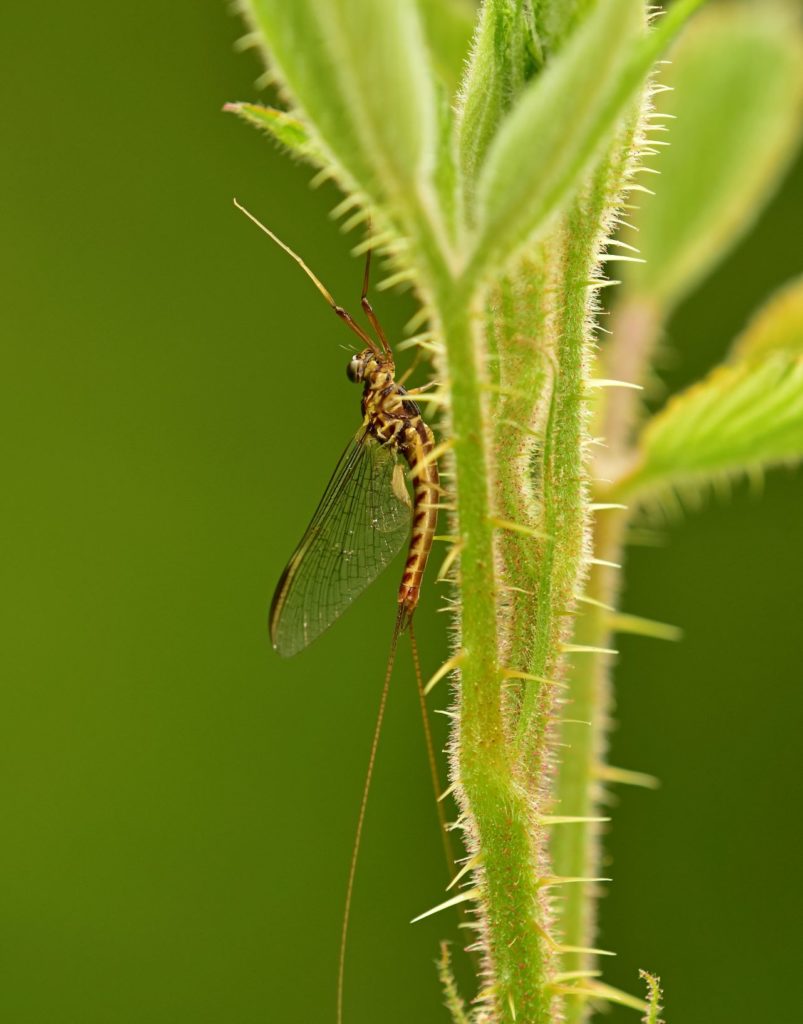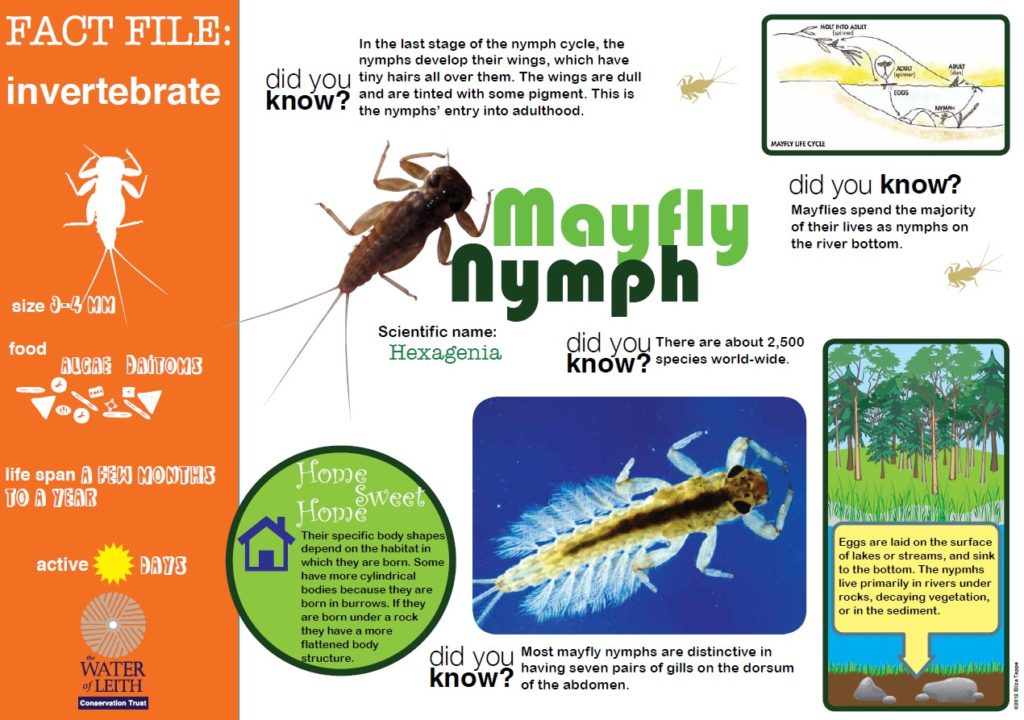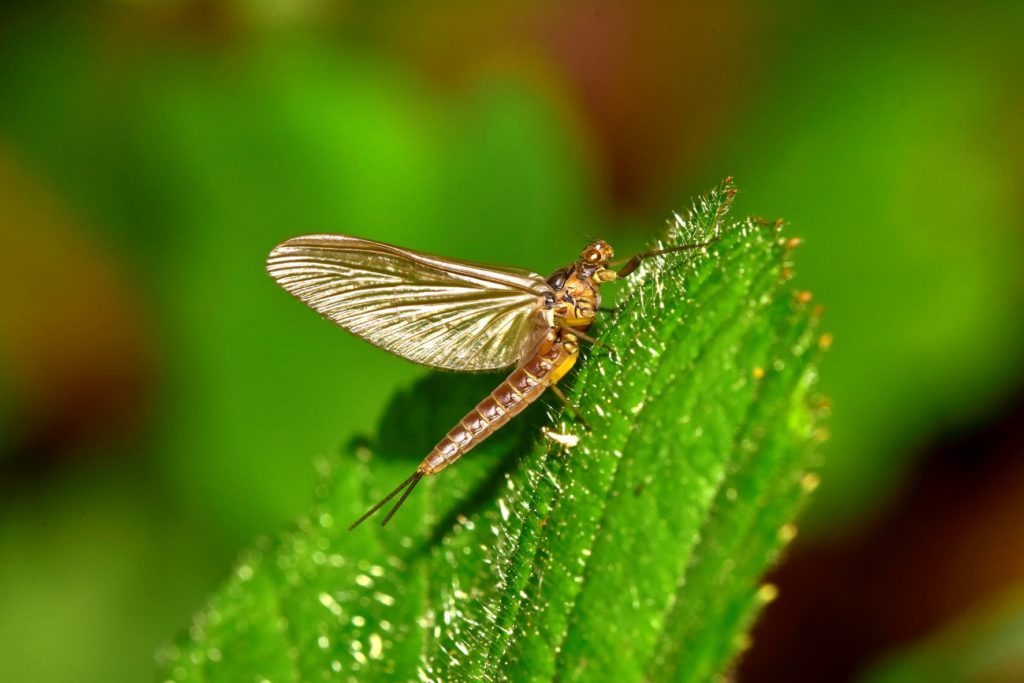This first image was taken at the subimagio stage of the mayfly between a nymph and adult mayfly. This is a vulnerable phase for the mayfly since the wings are formed, but have a dull opaque colour. This one below is of a full adult Imago stage which can effectively fly and mate over the water, lay their eggs and then die

Mayflies are amongst the most ancient type of insect still alive today. They were here about 100 million years before the dinosaurs. There are over 3000 types of mayfly. Mayflies are so primitive that they are the only insect still around today that has two stages to the adult part of its life cycle. These are
called sub-imago and imago. Mayflies have four stages to their lifecycle – egg, nymph, sub-imago (dun) and imago (spinner).
Male mayflies form a swarm just above the water, females fly into the swarm to mate. After mating in flight the female falls onto the surface of the water and lays her eggs. They are often eaten by passing fish as she lies on the water. The male goes off to nearby land to die. The eggs sink to the bottom of the river where they stick to plants and stones. They take between a few days and a number of weeks to hatch. When they hatch into nymphs they can spend up to 2 years at the bottom of the river before finding their way to the surface to emerge as adult mayflies. The sub-imago pulls itself up on plants and dries its wings. It then sheds again and becomes an imago and starts the cycle again. Adult mayflies live for a very short time, the Dolania americana only lives for about 5 minutes before they mate, lay eggs and die. Mayflies cannot eat when they emerge as adults, they have mouthparts but they do not function and their digestive system is filled with air – Thank you to the Tweed Forum for this explanation
Here is our Fact File




